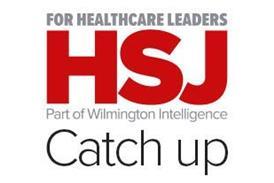Essential insight into England’s biggest health economy, by Ben Clover.
“The trusts have stood up as many critical care beds as they physically can, and filled them all. When there’s none left, they change the thresholds for critical care admission so it looks like the numbers are holding but in practice it means there are no more critical care beds to admit to.
“People who a week earlier would have gone into a critical care bed now don’t.”
These are the words of a London NHS trust chief executive when asked how the capital was doing now, compared to a week ago.
They should be borne in mind when people talk about lifting restrictions. Things now are worse than the numbers suggest. And the official numbers are, of course, scary.
As of 8am on Tuesday, there were 6,757 confirmed covid patients in beds in London hospitals. That’s roughly 1,000 more than at the first peak. Also, given the methods mentioned above, these patients will be sicker than the same patients in the first wave.
Although this has dipped a little since an apparent peak last week, this wave is already longer as well as higher. It has been above the first peak number since just after Christmas.
As of 8am on Tuesday, there were 1,298 patients in London’s intensive care unit beds, again higher than the last peak and down slightly from last week.
This is below the capacity threshold in the planning document leaked at the start of the month, which sounds positive, but nursing ratios have already been thrown out the window — and levels of 1:3/1:4 ICU nurse to patient, even 1:2, are much less safe.
But this is where the plateau problem is going to be most painful, hospital bosses told London Eye.
No one expects the decline in ICU patients to be quick.
As one put it: “It’s more a volcano than a peak for ICU. We are still stuck at an enormously high plateau.”
This means weeks more, if not months, of horrendously pressured shifts for staff, as patient numbers inch down.
It is also terrible news for hospitals looking to get stuck into the elective waiting lists that have grown so large. The continuing heavy use of anaesthetists in ICU is going to be a serious problem for the hundreds of P2 cancer patients deteriorating while they wait for their cancer operation (the London issue we wrote about a month ago has now seen spot contracts with the most advanced providers — HCA, London Clinic, The Cromwell — get closer to 50 per cent of what is needed. In normal times, there would be an inquiry into how the big private hospitals came to be treating less-urgent private patients ahead of more urgent NHS ones).
A hospital leader at a large trust said: “The plateau remains. Technically we are reducing but the percentage is so small so as to still feel flat. We reckon this week and next we will see the fall actually feeling like one. Pressure on [general and acute] beds and non-invasive ventilation is easing but it’s the ICU that is stubborn. Some of these patients are staying for a while so no surprise that there is a lag.”
Another made the point that acuity of patients was still a big problem: “London is seeing less [accident and emergency] covid admissions but the conversion into ICU is still prevalent so they are still feeling pressure. The rate of decline in need for ICU beds will be an open question.”
Last time, this decline took around two months from its April peak. It was falling from a slightly lower maximum, and staff were fresher.
The better news
Some trusts are seeing a definite decline in the number of covid patients in the less acute, general beds. From alarmingly high numbers, sure, but a decline nonetheless.
Hospital bosses put this down to the effects of lockdown, rather than early effects of the vaccine.
Some trusts are starting to see as many non-covid as covid patients.
Hearteningly, the drop-off in attendances from the people hospitals expect to see this time of year isn’t as bad as it was in April, London Eye was told. This indicates fewer people dying avoidably at home or on the street because they were too worried to come to hospital.
The less good news
Another chief executive says: “The big problem is staffing. So many people are sick/shielding/burnt-out that keeping minimum levels of staffing is really hard.”
This is a problem so often repeated it sounds intractable. It’s not though. The government could reallocate some/most of the £15bn for the 40 new hospitals into training and recruiting more staff.
Actual beds are not often the problem. The Royal London turned its 14th and 15th floors into a 176-bed ICU facility in three weeks for £20m (while all the attention was on the Nightingale where total patients treated were less than 50). Estates teams have done fantastic work.
Staffed beds, as discussed above, is the issue. It is not one that will get better soon but hopefully we can go into the next health emergency with a workforce that the government hasn’t gambled on underfunding for years.
So what will help soon? The vaccine? Maybe in three weeks.
One chief executive told London Eye: “The vaccine isn’t wide enough in the community nor is being given to those most likely to spread. Those it’s been given to are more likely to shield.”
Everyone is sick of the lockdown, but it works.
As another chief executive put it: “Biggest risk now is the early lifting of restrictions leaving pockets of high infection in deprived areas — this would see a surge of cases again in late March/April as per last year.”
So it’s worrying to hear the prime minister expressing sorrow and indicating a loosening will be considered in February. Especially as Matt Hancock had said the day before this was “not a moment to ease up”. The prime minister clarified today he would publish a plan for a gradual unlocking in late February, with restrictions in place until at least 8 March.
Surely we won’t make the same mistake twice inside 12 months?






















4 Readers' comments